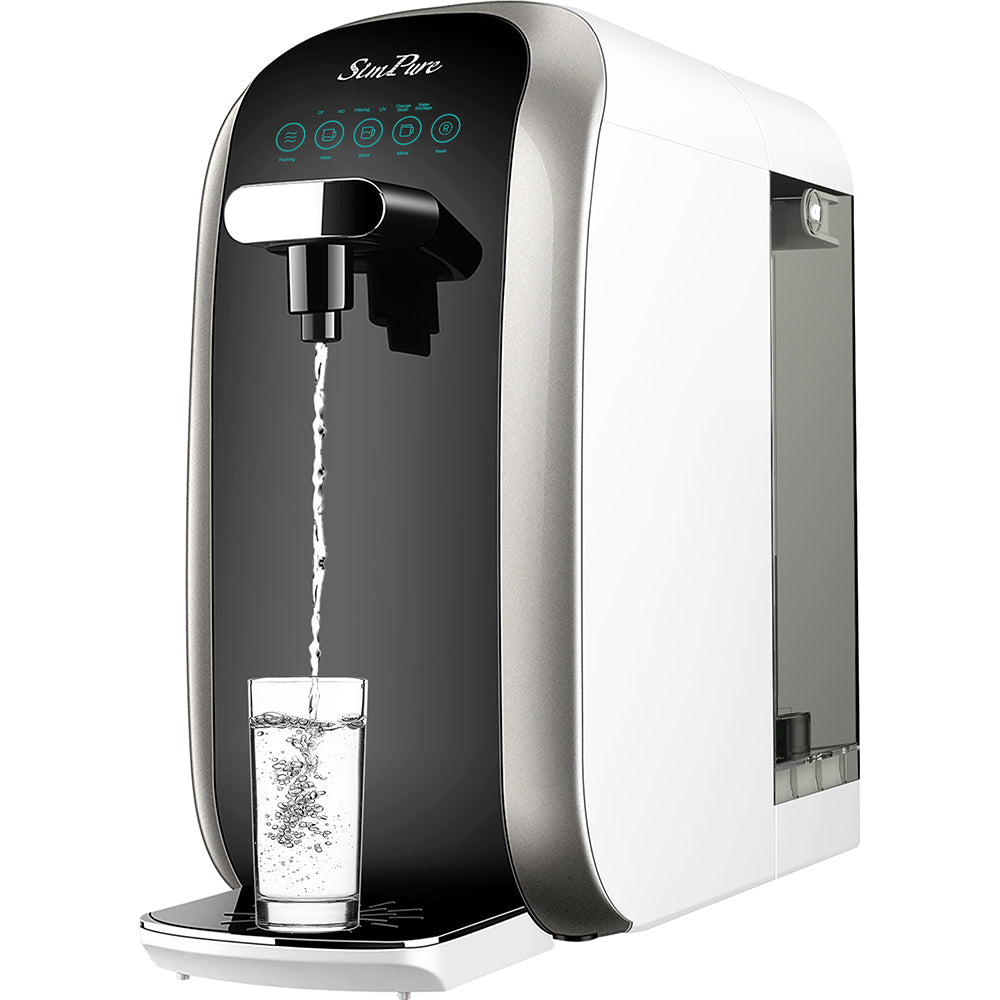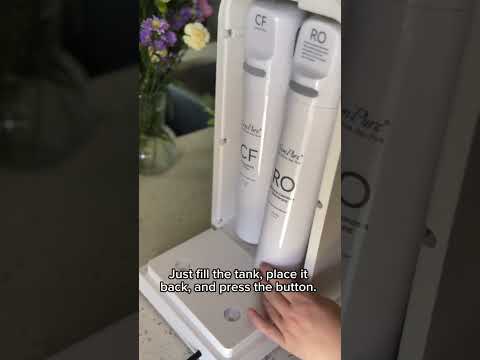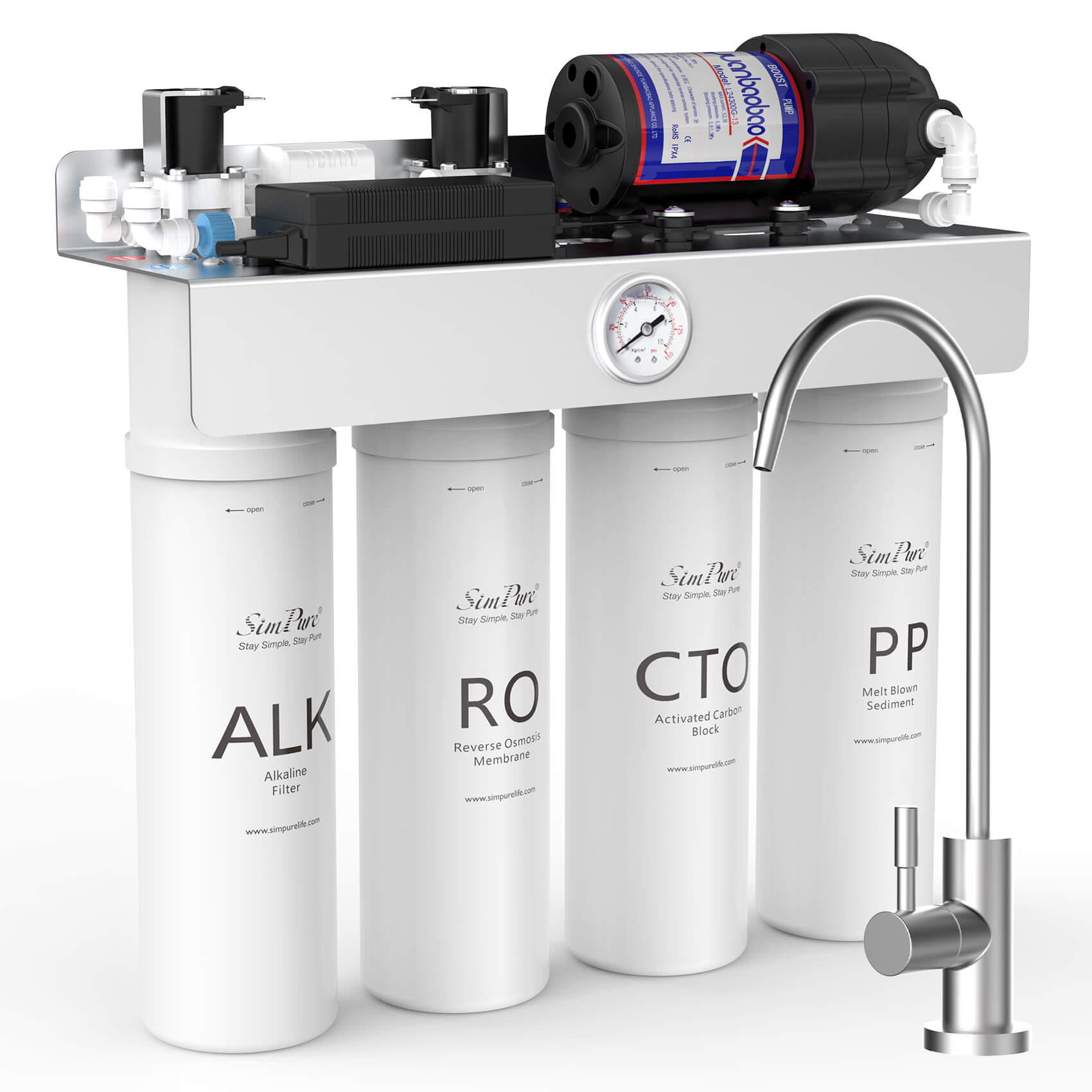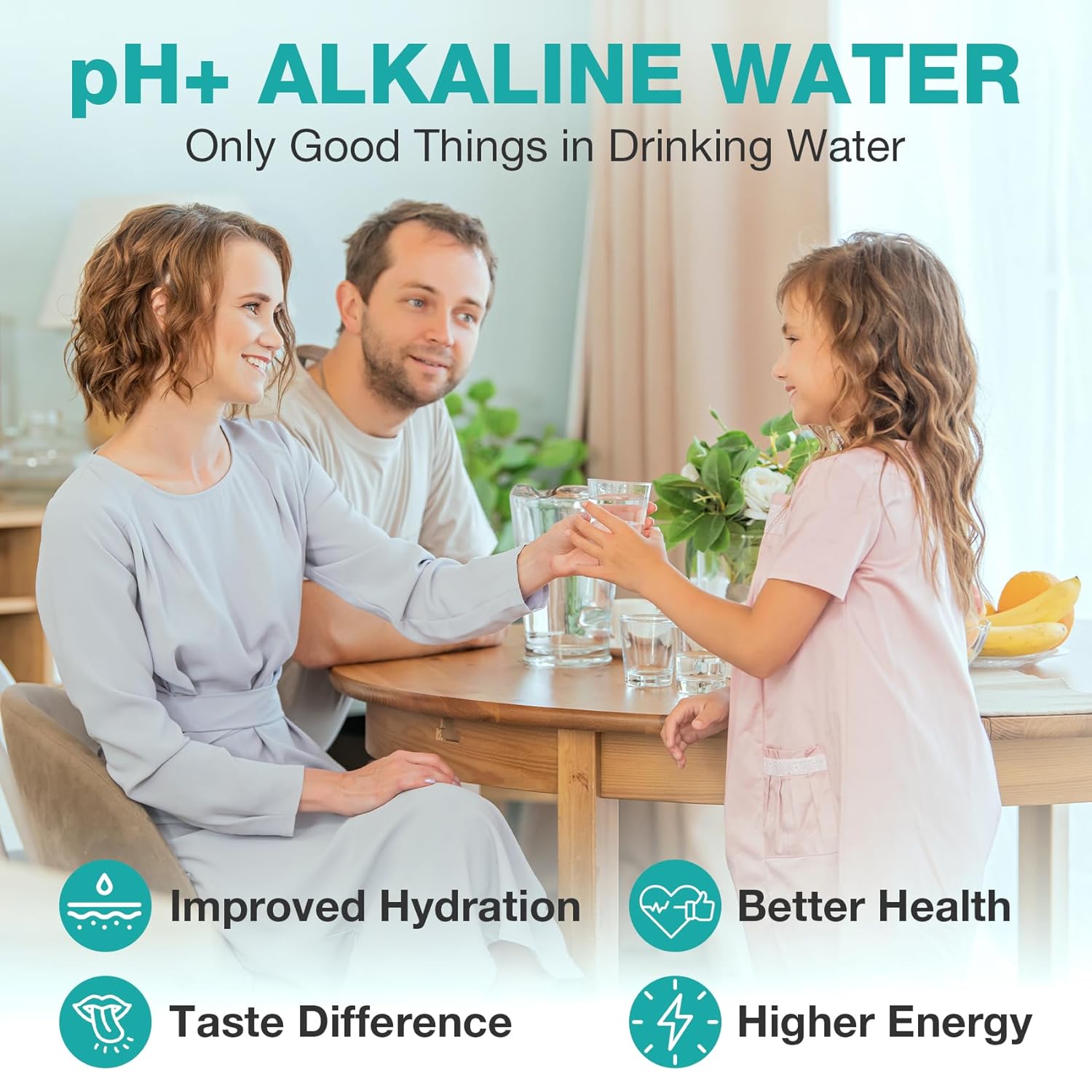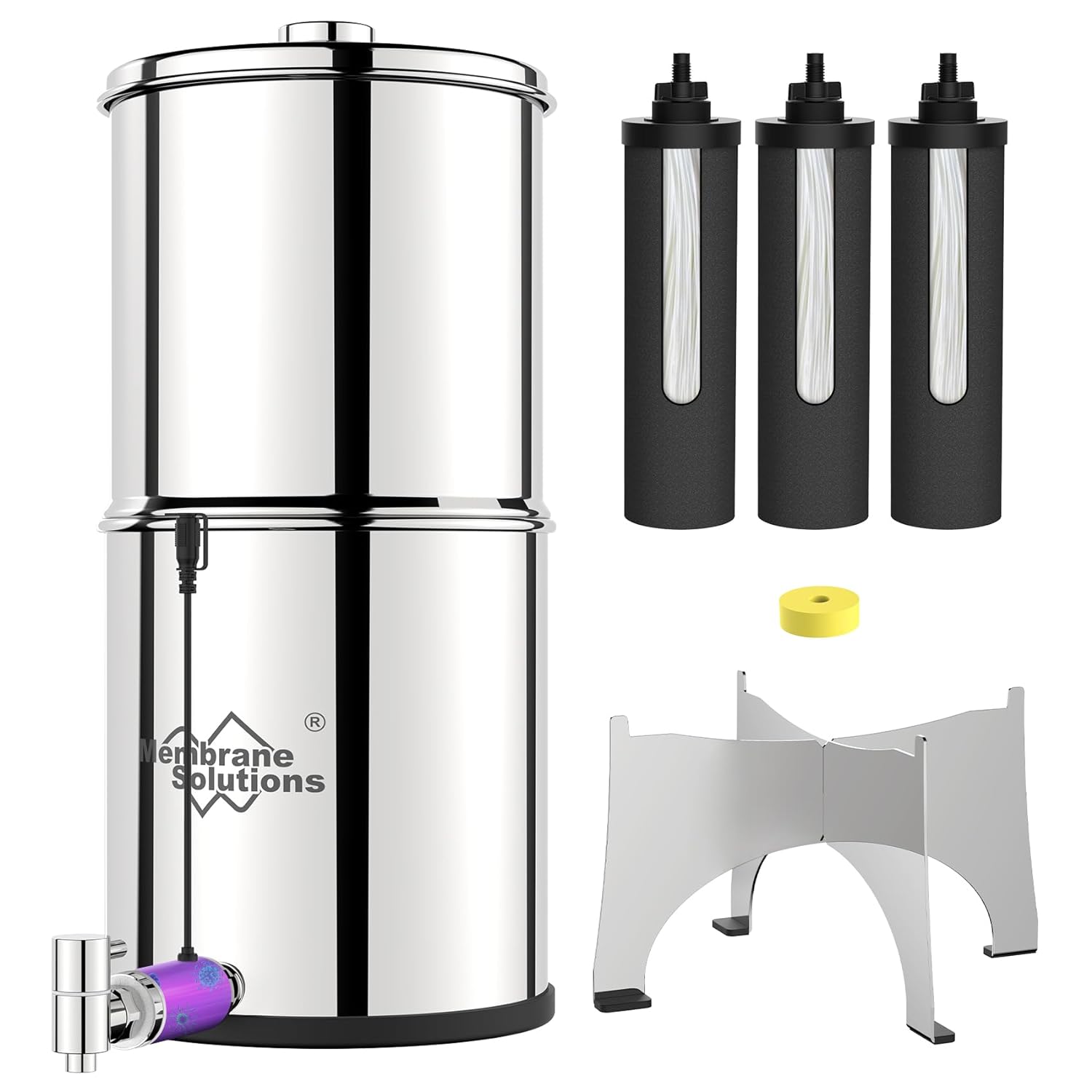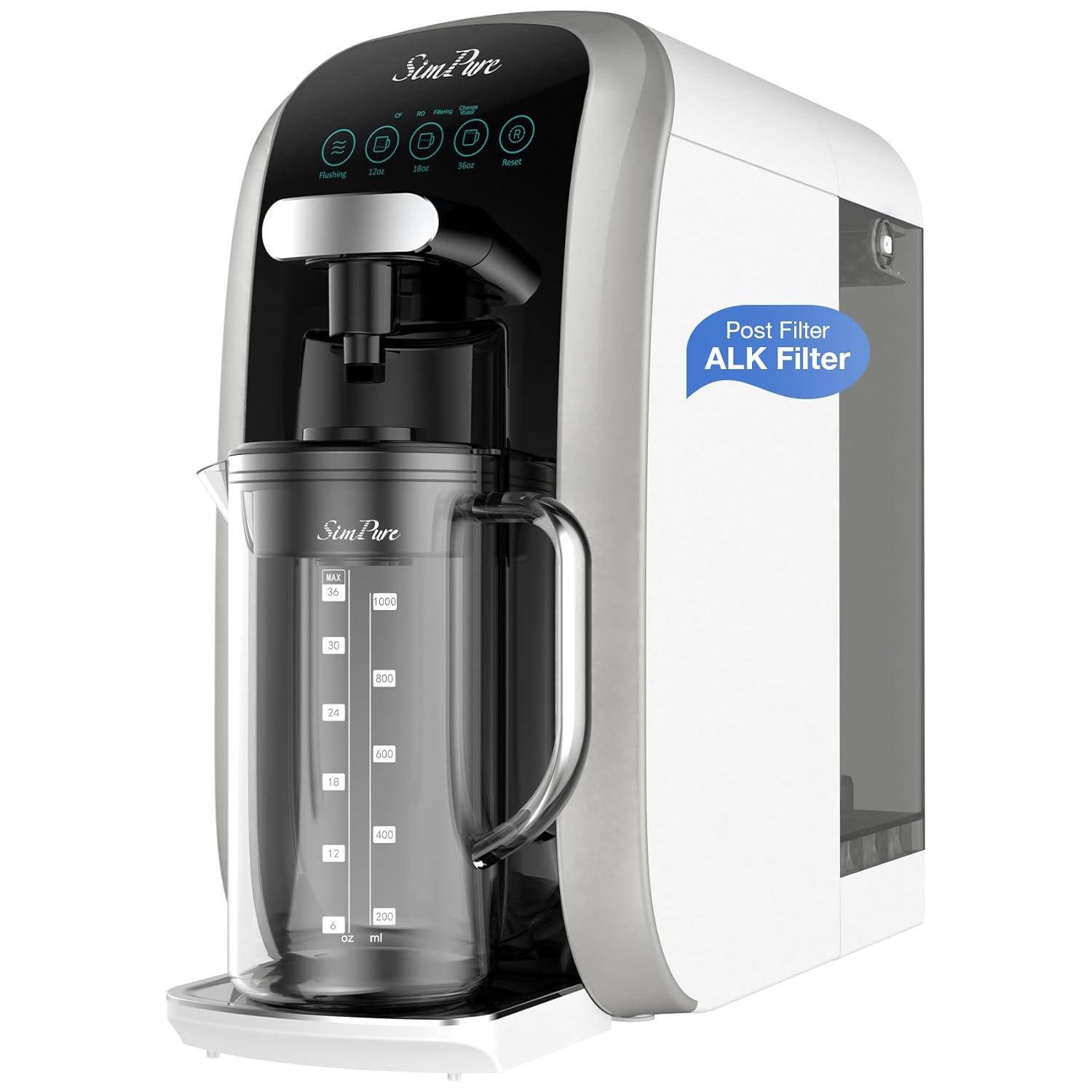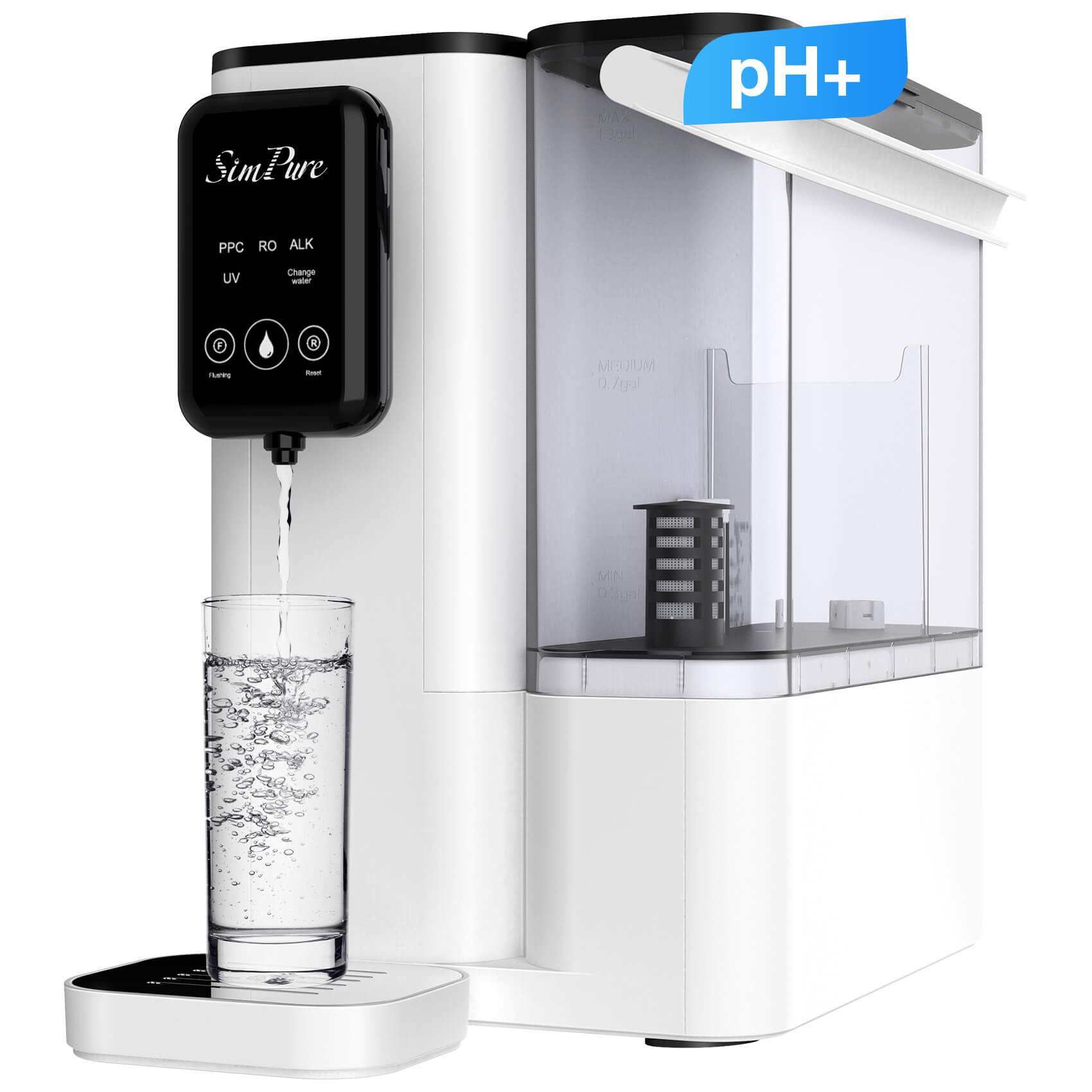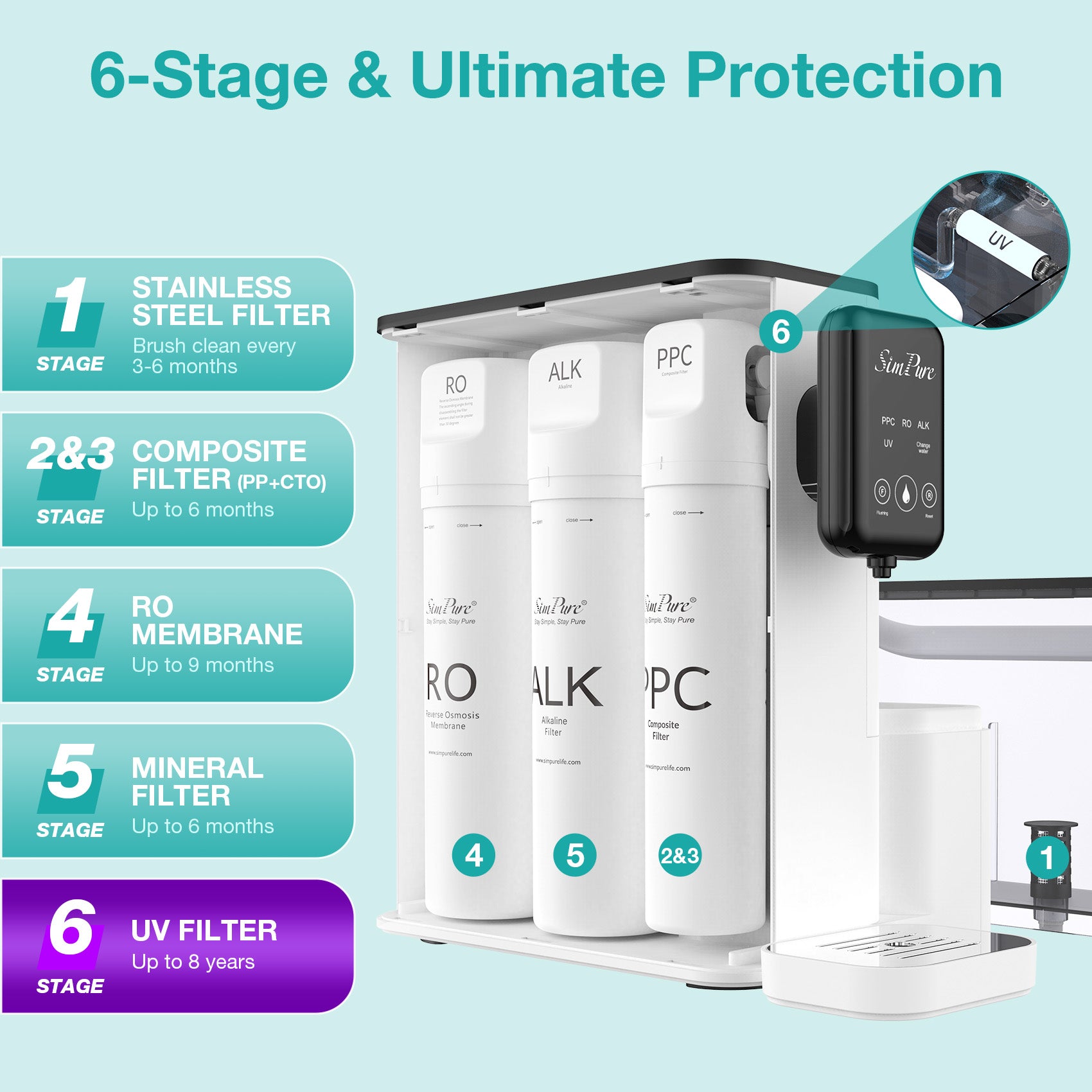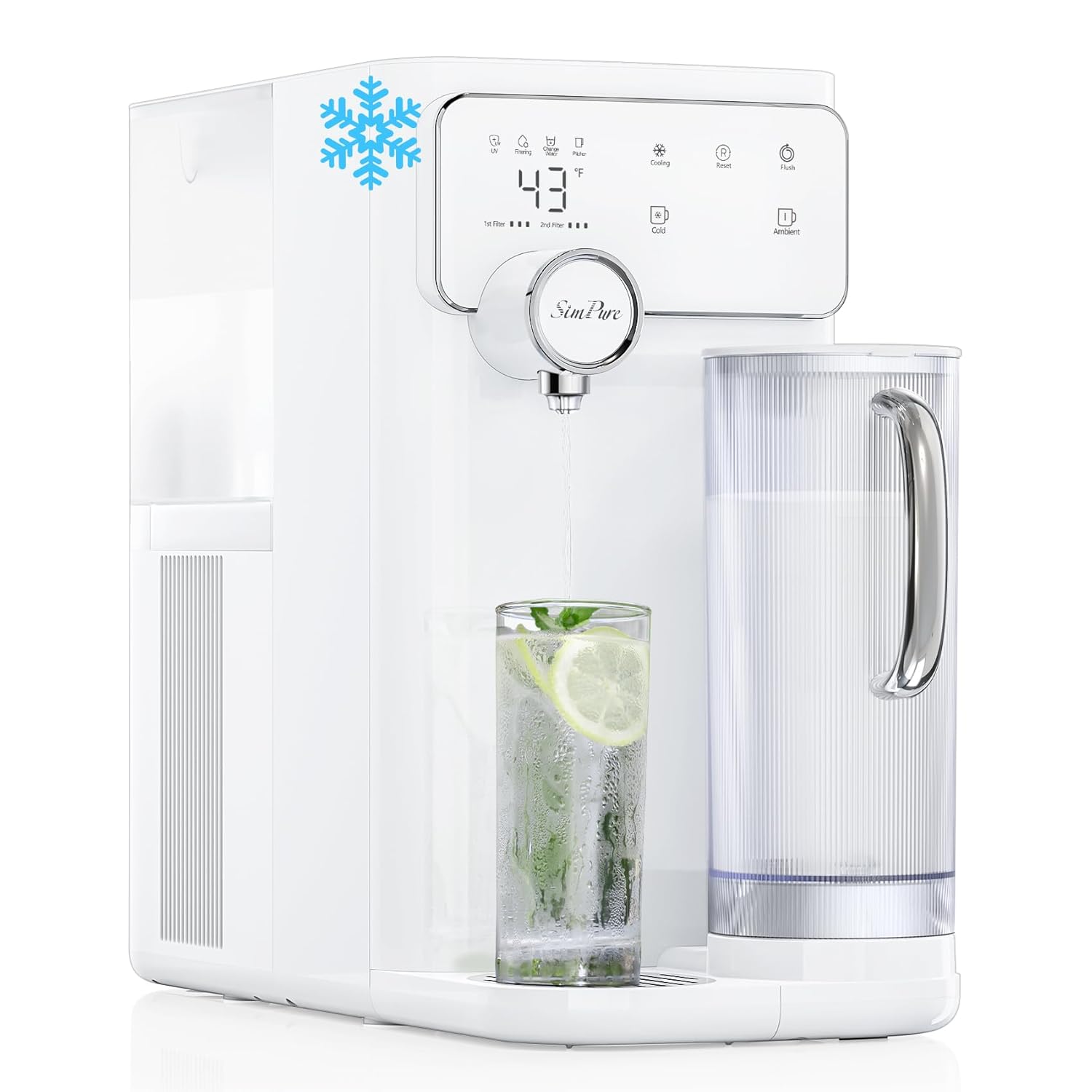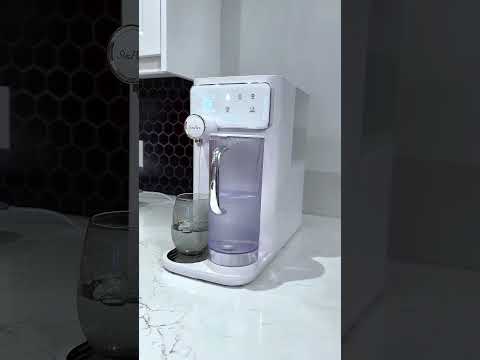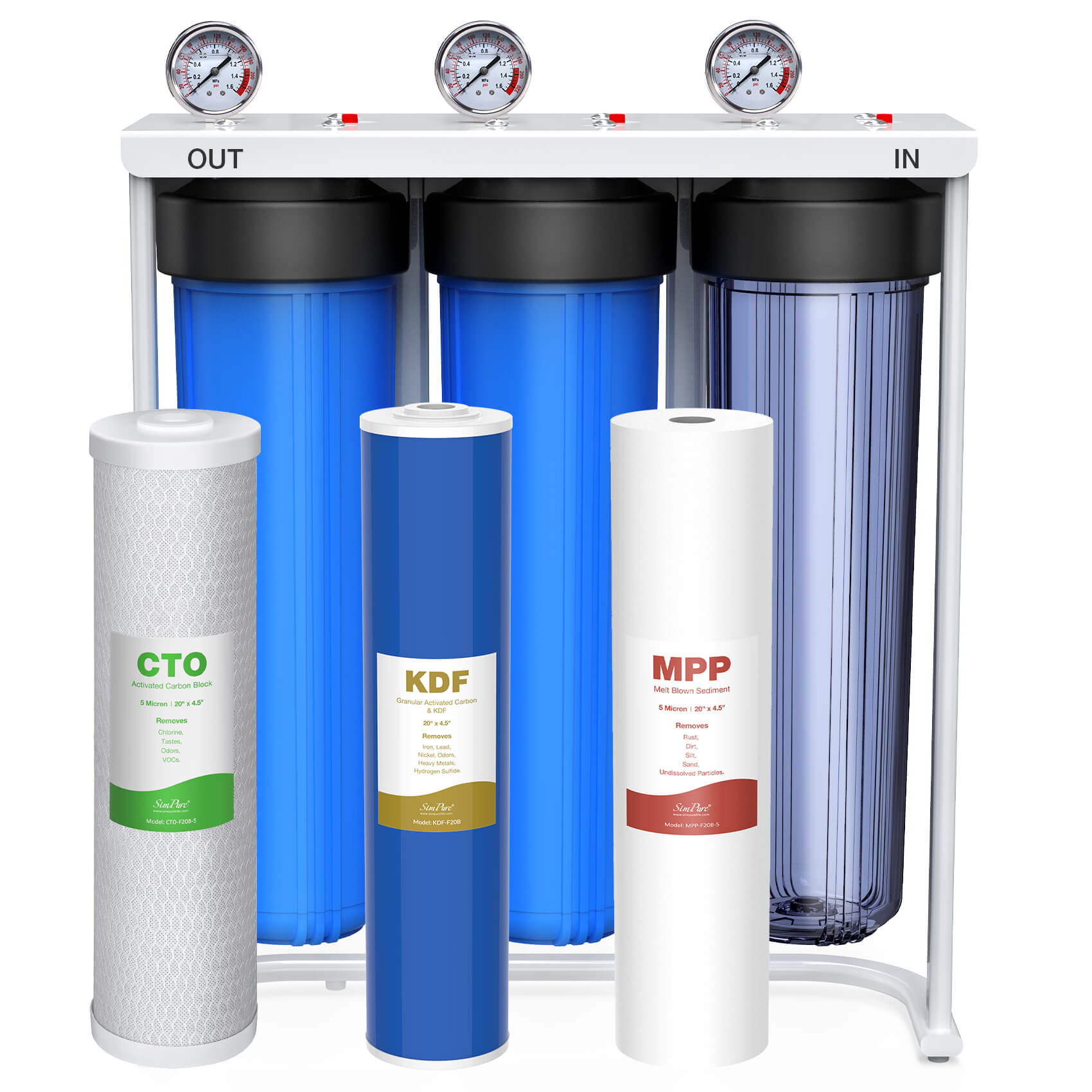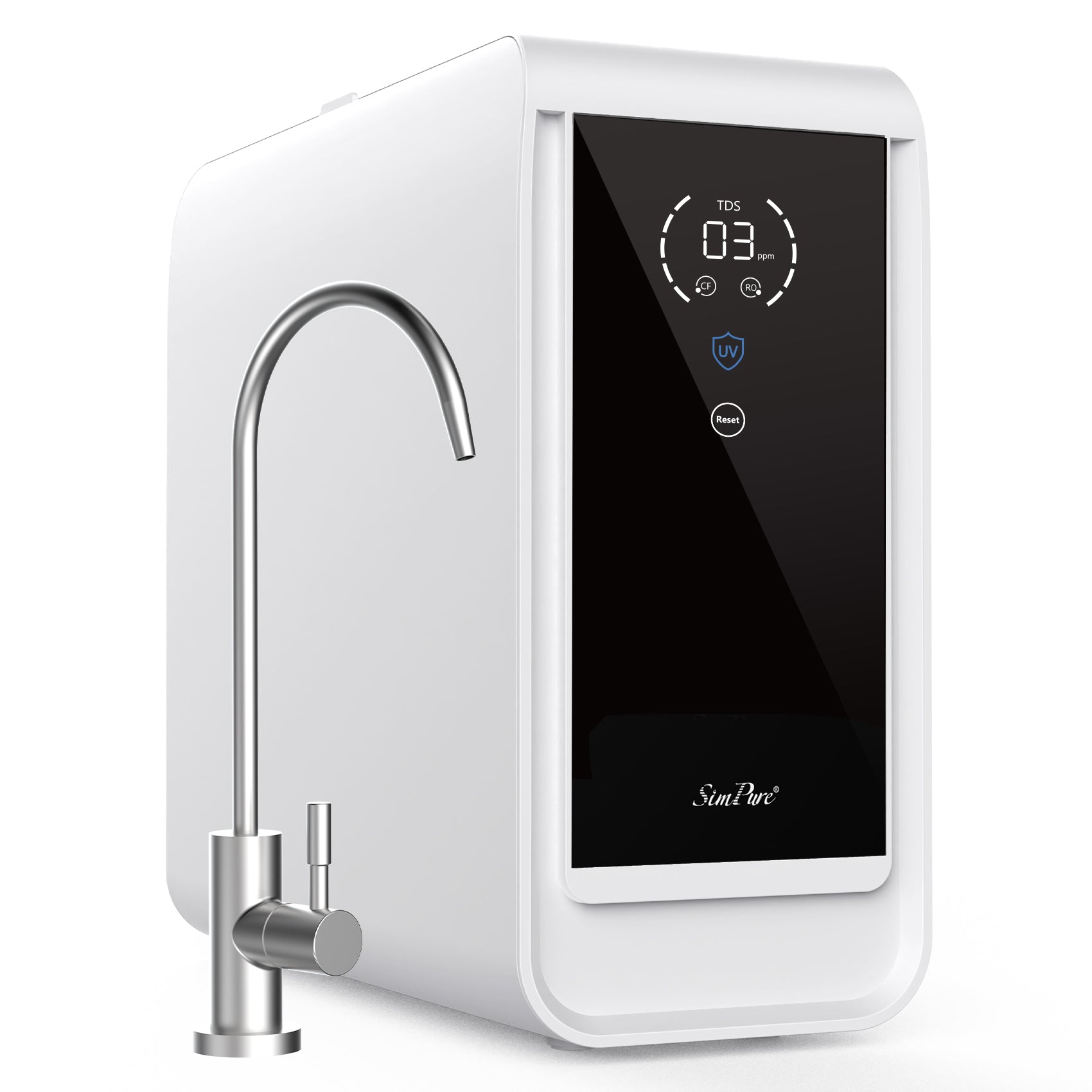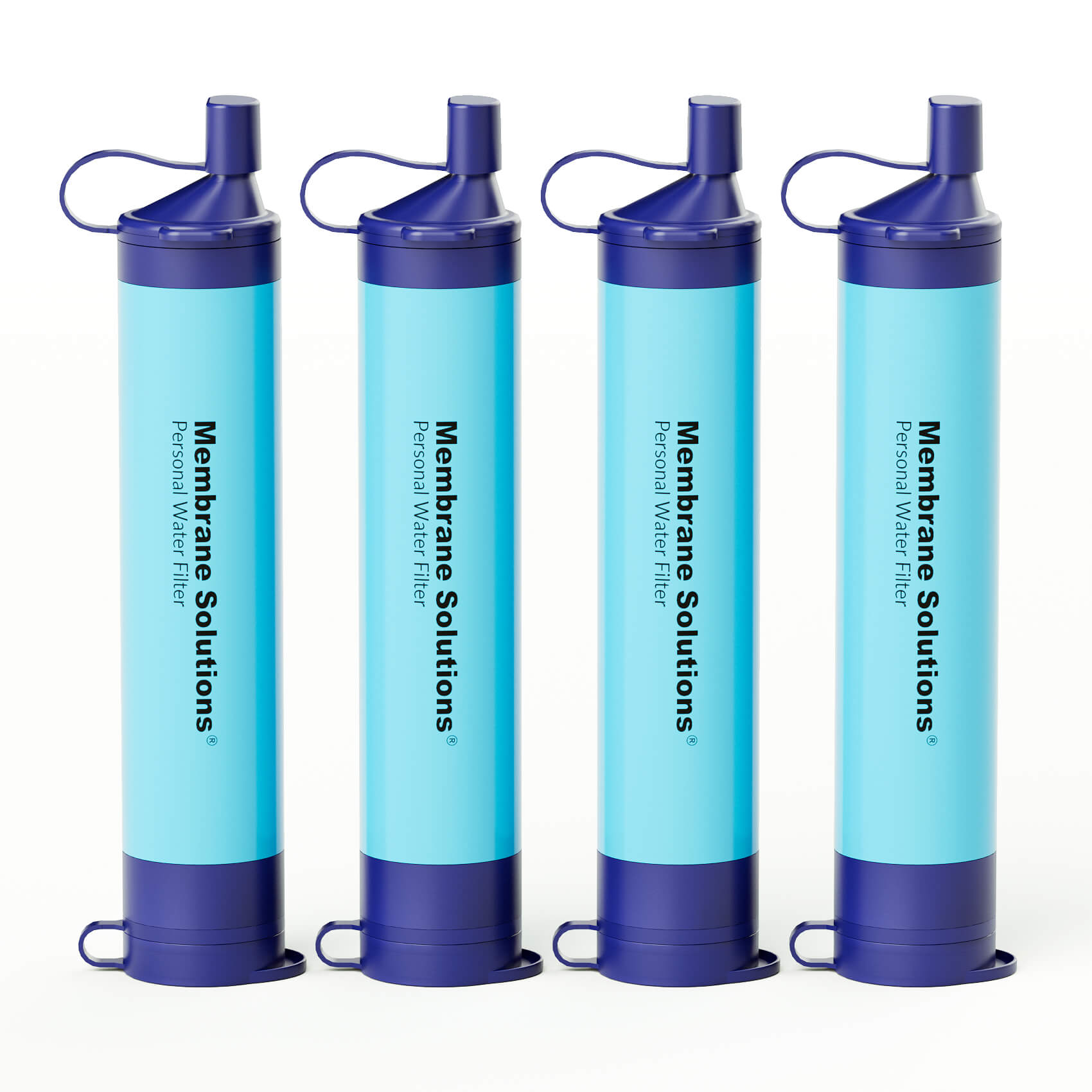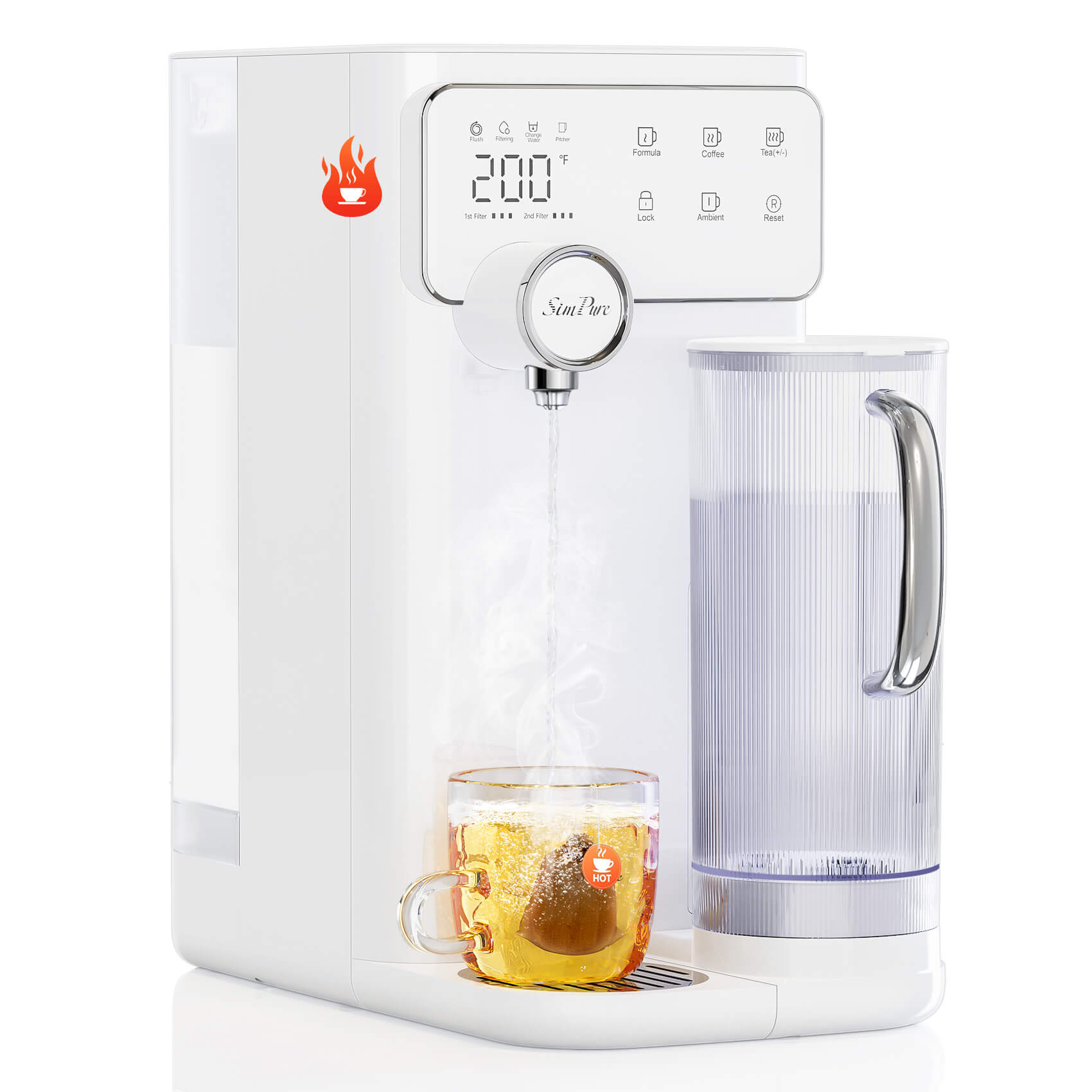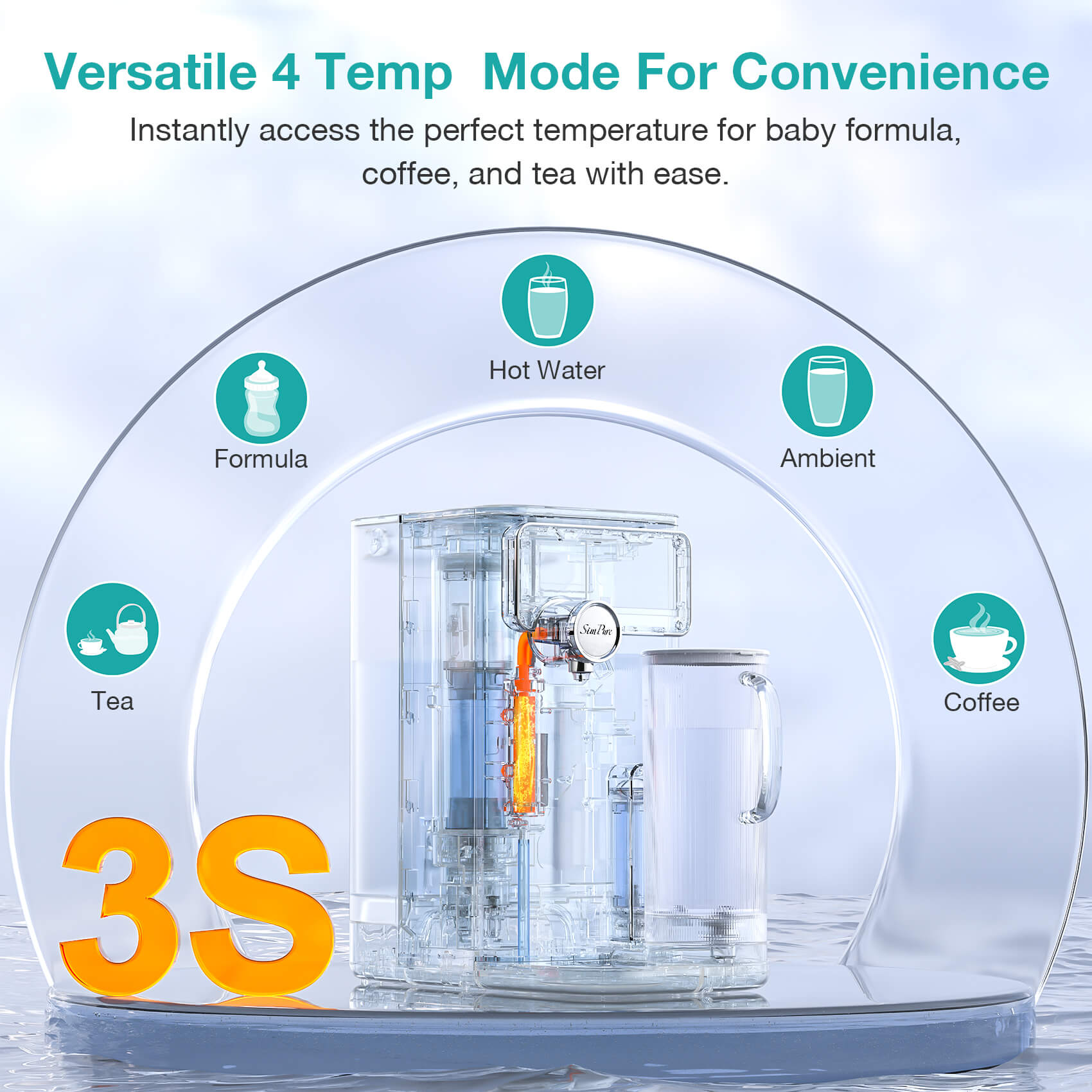With so much talk about clean water these days, you’ve probably heard about reverse osmosis (RO) systems. You might have heard the name tossed around, but what exactly does an RO system do? How do reverse osmosis systems work? Why is it so popular in homes today? If you're new to water filters or just curious, this simple guide will walk you through everything you need to know about how reverse osmosis systems work and why they’re a top choice.
Background: What Is a Reverse Osmosis System?

Reverse osmosis is a water filtration technology that uses a thin semi-permeable membrane with tiny pores to allow pure water to pass through while blocking larger molecules such as ionized dissolved salts and other impurities.
Imagine it like a super-fine sieve that catches everything you don’t want in your water. The system typically consists of several stages. First, large particles, like sediment, are removed. Then, the water flows through the RO membrane, which removes even smaller particles such as minerals, salts, and harmful chemicals. Finally, the filtered water goes through a post-filter to make sure it tastes fresh and clean.
Reverse osmosis system produces high-purity water that can be used in industrial boilers, drinking water systems, seawater desalination, pharmaceutical production, cosmetic production, food and beverage processing, and many other applications. The reverse osmosis membrane can completely separate heavy metals, pesticides, bacteria, viruses, impurities, etc. The entire working principle adopts physical methods, without adding any bactericides and chemicals, so no chemical transformation will occur.
Function & Purpose: What Does a Reverse Osmosis System Do?
A reverse osmosis (RO) system is designed to purify water by removing impurities and contaminants. It does this by forcing water through a special filter called a membrane that blocks unwanted substances, while allowing clean water to pass through.
Here’s what an RO system does:
- Removes Contaminants: It filters out harmful substances like chlorine, lead, pesticides, heavy metals, salts, and even some bacteria or viruses. This results in cleaner, safer water.

- Improves Taste and Odor: By removing chlorine and other chemicals, an RO system improves the taste and smell of your drinking water, making it more pleasant to consume.
- Provides Safe Drinking Water: The system helps ensure your water is free from toxins, making it safer to drink and use in cooking. This is especially helpful in areas where tap water may be contaminated.
- Purifies for Various Uses: Apart from drinking, RO water is often used for cooking, making ice, and for appliances like coffee makers and humidifiers, where clean water is important for performance and longevity.
Specific Product Example:
Take the SimPure Y9A Countertop RO System as a great example of how reverse osmosis works. This system uses 6 stages to purify your water. The process starts with sediment and pre-filters that remove larger particles and chlorine. Then, the RO membrane works to remove heavy metals, chemicals, and other toxins. Afterward, the alkaline filter adds beneficial minerals like calcium and magnesium to improve the taste and health benefits of the water. The last step, UV sterilization, ensures 99.99% elimination of harmful bacteria. This complete system guarantees you have fresh, mineralized, and safe water.

Work Principle: How Does Reverse Osmosis Work?
Imagine a sieve used to sift flour. When you pour flour through it, the sieve lets only fine particles pass while holding back larger pieces. Reverse osmosis works in a similar way. It forces water through a special membrane that only lets pure water through, blocking harmful things like chlorine, metals, and viruses, leaving you with fresh, clean water.
You can learn from the name that reverse osmosis is the opposite of the osmosis process in nature. During the osmosis process, water or other substances move from an area of low concentration of secondary substances (such as salts) to an area of high concentration, passing through a semipermeable membrane on the way. Think of it this way: each water molecule is essentially trying to dilute the other molecules.

In reverse osmosis, the process is reversed. The filtration system applies pressure to the highly concentrated solution to move it through the semipermeable membrane to the area of lower concentration. The semipermeable membrane blocks the passage of harmful components (such as those that cause water quality problems). The concentrated molecules remain on one side, while the treated water remains on the other side. Artificial pressure and reverse osmosis membranes help remove minerals, substances, and potential contaminants from drinking water.
Comparison: How Does Reverse Osmosis Compare To Other Water Treatment Options?
However, it’s important to understand how reverse osmosis compares to other common water treatment options like activated carbon filters, distillation, and UV purification. Here’s a breakdown of how reverse osmosis stacks up:
1. Reverse Osmosis vs. Activated Carbon Filters
Activated carbon filters are great for removing chlorine, bad odors, and some organic compounds, but they don’t address heavy metals, dissolved salts, or microorganisms. Reverse osmosis, on the other hand, can remove a wider range of contaminants, including heavy metals (like lead and arsenic), fluoride, and bacteria. While carbon filters are often used in conjunction with other systems, RO provides a more thorough filtration process, especially for TDS (Total Dissolved Solids).
2. Reverse Osmosis vs. Distillation
Distillation works by boiling water and collecting the steam to leave contaminants behind. While it removes almost everything, including minerals, it’s a slow process and uses a lot of energy. RO, in comparison, is faster and more energy-efficient, though it may not remove all the volatile compounds that distillation can. One key difference is that RO can also maintain some essential minerals by using a remineralization stage, as seen in systems like the SimPure Y9A, which adds healthy minerals back into the water.
3. Reverse Osmosis vs. UV Purification
UV purifiers kill bacteria and viruses using ultraviolet light, but they don't remove physical contaminants like chemicals, heavy metals, or minerals. While UV treatment is effective for sterilization, it doesn’t filter out impurities. Reverse osmosis, with its multi-stage filtration process, removes a broader range of contaminants, offering both purification and disinfection in one system. Some RO systems, like the SimPure Y9A, even include a UV sterilization stage for added protection.
4. Reverse Osmosis vs. Filtration
Basic filtration systems, such as pitcher filters or faucet-mounted filters, work by trapping impurities in the filter media. These are effective for chlorine and other large particles, but they don’t offer the same level of purification as reverse osmosis. RO is capable of removing finer particles and a wider range of contaminants, including microplastics, dissolved solids, and harmful chemicals, making it a more comprehensive solution.
While each water treatment method has its own strengths, combining reverse osmosis with other filtration technologies can provide the best results. For instance, using an activated carbon filter before an RO system can help remove chlorine and other chemicals that could damage the RO membrane. Adding a UV purification stage after the RO process can further ensure that any remaining microorganisms are sterilized. By combining these methods, you create a multi-barrier approach that addresses a wider range of contaminants, giving you the purest and safest drinking water possible.
Efficiency: Do Reverse Osmosis Systems Work?
To demonstrate the efficiency of reverse osmosis systems, we can look at several key factors that highlight how well they work in providing purified water. Here’s how you can showcase the effectiveness:
Contaminant Removal Efficiency
Reverse osmosis systems are known for their high efficiency in removing contaminants. They can eliminate up to 99% of impurities, including heavy metals like lead and arsenic, chlorine, fluoride, pesticides, and microplastics. This makes RO systems one of the most effective water purification methods available, outperforming simpler filtration technologies like activated carbon filters.
Flow Rate
Efficiency also depends on how quickly the system can filter water. Many modern RO systems provide fast filtration, ensuring you don't have to wait long for clean water. A higher flow rate ensures that large amounts of purified water are available when you need it, making the system more convenient and time-efficient for daily use.
Water Waste Ratio
One measure of efficiency is the amount of water wasted in the process. Traditional RO systems can waste up to 4 gallons of water for every gallon purified. However, newer models have improved water efficiency, reducing waste and making them more eco-friendly and cost-effective.
Mineral Remineralization
A well-designed RO system not only removes harmful contaminants but can also add beneficial minerals back into the water. This ensures that the purified water retains essential minerals like calcium, magnesium, and potassium, promoting better taste and health benefits.
Energy Efficiency
Compared to other water purification methods, such as distillation, RO systems are generally more energy-efficient. They don't require heating water, which saves energy. Many modern RO systems are designed to operate with minimal power, reducing your energy bill while still providing high-quality water.
Filter Lifespan
The efficiency of an RO system is also reflected in the longevity of its filters. With regular maintenance, RO filters can last for several months, reducing the need for frequent replacements and lowering long-term costs.
Certification for Quality Assurance
Reputable certifications like NSF International and SGS ensure that the RO system has been rigorously tested to meet specific standards for water purification.
When an RO system has NSF or SGS certification, it adds another layer of trust for consumers, confirming that the system performs as advertised. These certifications ensure that the system not only works but also works consistently over time, providing safe and clean water for the long term.
In summary, reverse osmosis systems are powerful, efficient, and reliable when it comes to purifying water. With multiple stages of filtration and high-quality design, systems like SimPure's RO solution ensure that you and your family enjoy fresh, clean water without the need for complex installation.
If you are asking: "Where can I find a professional team to know more about water testing and get the best solution for my home water treatment?" the answer is clear. With the SimPure team, you don’t just get to know more about your water quality, but peace of mind knowing you’re drinking clean, pure water.
Related Blogs on Reverse Osmosis System:
- Does Reverse Osmosis Remove Microplastics?
- Does Reverse Osmosis Remove Heavy Metals?
- Reverse Osmosis vs Distilled Water
- Is Reverse Osmosis Water Alkaline?
- Does Reverse Osmosis Soften Water?
- How to Remineralize Reverse Osmosis Water
- Does Reverse Osmosis Remove Pharmaceuticals/Drugs from Water?
- Does Reverse Osmosis Remove Bacteria?
- Does a Reverse Osmosis System Remove Calcium?
- Is Reverse Osmosis Water Good for You?




